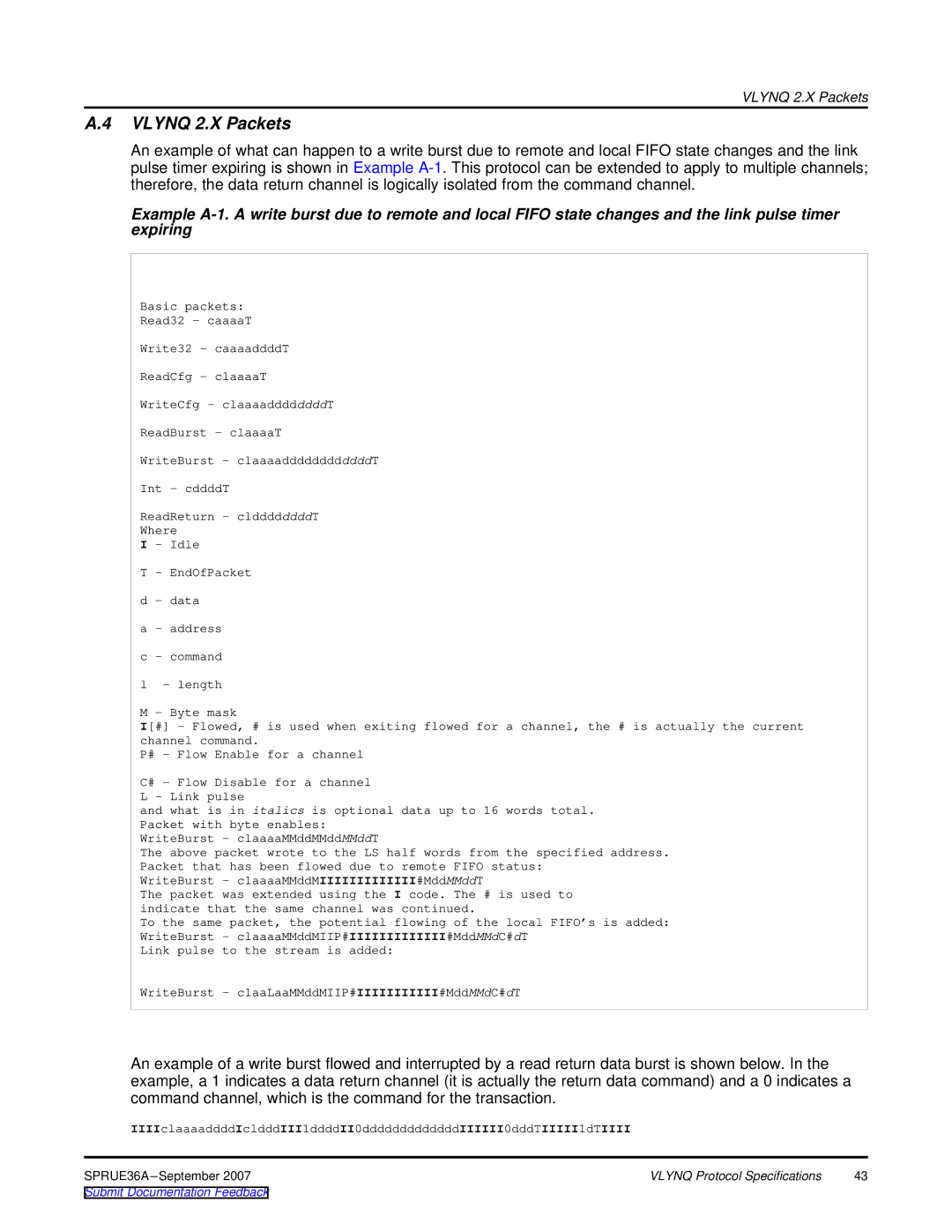
www.ti.com
VLYNQ 2.X Packets
A.4 VLYNQ 2.X Packets
An example of what can happen to a write burst due to remote and local FIFO state changes and the link pulse timer expiring is shown in Example
Example
Basic packets:
Read32 - caaaaT
Write32 - caaaaddddT
ReadCfg - claaaaT
WriteCfg - claaaaddddddddT
ReadBurst - claaaaT
WriteBurst - claaaaddddddddddddT
Int - cddddT
ReadReturn - clddddddddT
Where
I - Idle
T - EndOfPacket
d - data
a - address
c - command
l - length
M - Byte mask
I[#] - Flowed, # is used when exiting flowed for a channel, the # is actually the current channel command.
P# - Flow Enable for a channel
C# - Flow Disable for a channel L - Link pulse
and what is in italics is optional data up to 16 words total. Packet with byte enables:
WriteBurst - claaaaMMddMMddMMddT
The above packet wrote to the LS half words from the specified address. Packet that has been flowed due to remote FIFO status:
WriteBurst - claaaaMMddMIIIIIIIIIIIII#MddMMddT
The packet was extended using the I code. The # is used to indicate that the same channel was continued.
To the same packet, the potential flowing of the local FIFO’s is added: WriteBurst - claaaaMMddMIIP#IIIIIIIIIIIII#MddMMdC#dT
Link pulse to the stream is added:
WriteBurst - claaLaaMMddMIIP#IIIIIIIIIII#MddMMdC#dT
An example of a write burst flowed and interrupted by a read return data burst is shown below. In the example, a 1 indicates a data return channel (it is actually the return data command) and a 0 indicates a command channel, which is the command for the transaction.
IIIIclaaaaddddIcldddIII1ddddII0dddddddddddddIIIIII0dddTIIIII1dTIIII
SPRUE36A | VLYNQ Protocol Specifications | 43 |
